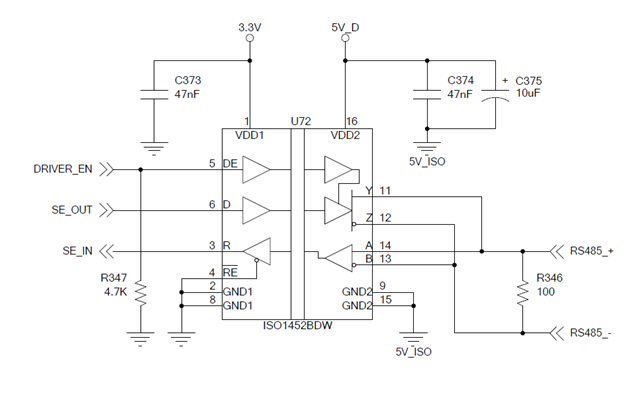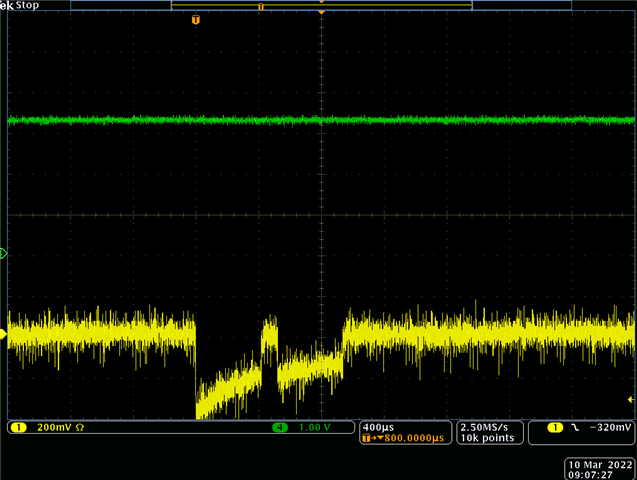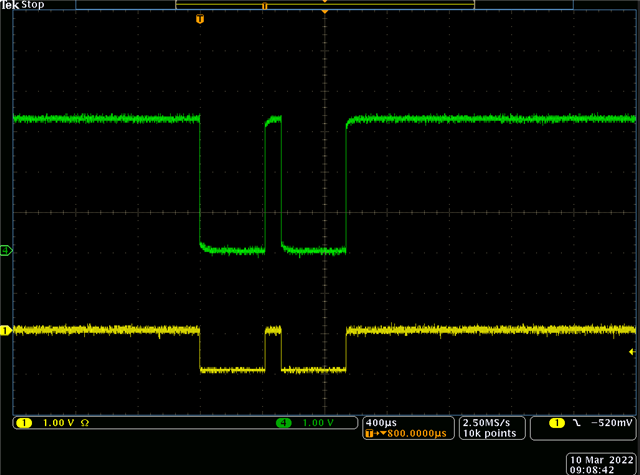I am using the ISO1452BDW in a 2-wire, half-duplex configuration. It appears from several other posts on the TI support forums that this should be achievable by tying the Y/A pins and Z/B pins together.
Should it be possible to hard tie the ~RE pin to ground, and let another device toggle the DE line upon transmit? In my troubleshooting, it appears that I only see traffic come in on the single-ended R line when ~RE and DE are both tied low. I had thought that it would be possible to leave the ~RE pin low while the DE pin is high, and this would just result in a sort of loopback to allow the data being transmitted out to be received/confirmed. The behavior of the chip would seem to indicate otherwise, however.
My question is, should this theoretically be possible? Or put more simply, can I have ~RE tied low and DE tied high and successfully send/receive data?





